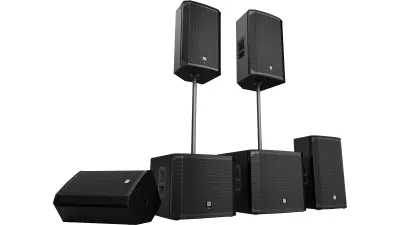Peak Anticipation Limiter

Peak Anticipation Limiter
Protect your speaker, protect your performance, protect your investment.

Adapted from EV’s concert sound systems, EV’s Peak Anticipation Limiter algorithm prevents speakers from damage due to over excursion and the hard-clipping of the amplifier.
The PA limiter is designed to protect the transducers form instantaneous peak voltages that can cause over excursion, which eventually leads to mechanical failure of the transducers. Not all limiters are equal. EV engineers have spent years developing and optimizing the PA limiter, using a combination of double blind listening tests, electrical measurements, and real world abuse testing. The PA limiter is a low-latency "look ahead" limiter, which means that the DSP samples the signal prior to applying any processing. This prevents the signal from overshooting the limiter.
Voltage at the transducer terminal is more important to examine than peak power handling of each transducer when designing peak limiters. “Wattage,” especially when dealing with transducers that have an impedance that varies with frequency, is a dubious term that isn’t useful to engineers when designing limiter parameters. The DVN woofer used in X2, for example, is 500 W per the industry standard AES2-1984 power test. Since the AES noise test has a 6 dB crest factor, the peak power is rated at 2000 W. However, this peak power handling rating isn’t relevant to the proper optimization of the system. EV engineers instead examine the instantaneous peak voltage the transducer can handle long term without mechanical failure, using a variety of proprietary test signals and real-world program material. If one were to try and convert the instantaneous peak voltage back to a peak power handling rating they would find that it is higher than the AES rating would indicate.
It's also important to examine the peak voltage capability of the amplifier when developing the PA limiter. EV engineers examine the output of the recommended TG-7 amplifier in a variety of mains and loading conditions. Even under the worst case conditions, the PA limiter threshold is set slightly below the peak voltage capability of the amplifiers, which prevents the amplifier from clipping or going into its own protection. This is highly optimized as it allows a small amount of headroom within the system before the amplifier protection activates.

